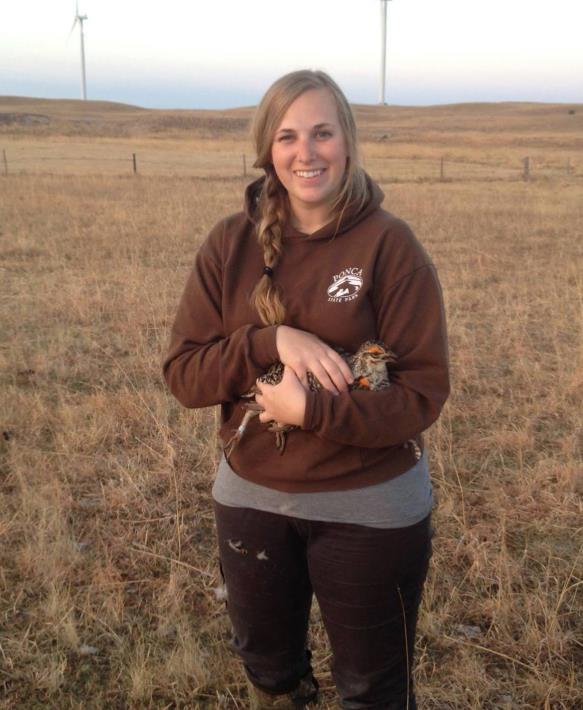
Jocelyn Olney Harrison, graduate student, will defend her master's degree thesis at 1 p.m., July 24 in Hardin Hall, Room 901.
Her thesis is titled, "Assessment of disturbance effects of an existing wind energy facility on greater prairie-chicken (Tympanuchus cupido pinnatus) breeding season ecology in the Sandhills of Nebraska." Her advisers are Larkin Powell and Mary Bomberger Brown.
Abstract:
Recent wind energy development in the Great Plains of North America has given rise to concerns of potential impacts on the greater prairie-chicken (Tympanuchus cupido pinnatus). Recent studies in fragmented landscapes have suggested greater prairie-chickens may avoid wind facilities, which may restrict them to less suitable habitat and lower their chances of reproduction and survival.
But, it is unknown if there is a similar effect in contiguous grass landscapes. Thus, we investigated the effect of a pre-existing, 36-turbine wind energy facility on greater prairie-chicken nesting, brood-rearing, and spatial ecology in the Nebraska Sandhills. We captured and marked 78 female greater prairie-chickens along a 24-km disturbance gradient leading away from the wind facility in 2013 and 2014, and used radio and satellite telemetry to monitor females throughout the breeding seasons.
We located and monitored 91 nests and 31 broods, and recorded habitat, temporal, and weather covariates for nest and brood locations throughout the study period. Proximity to the wind energy facility did not affect greater prairie-chicken nest site preference or nest survival. We also found no effect of the wind energy facility on greater prairie-chicken brood site preference or survival. With regard to greater prairie-chicken spatial ecology, we found no significant difference between home range area for females that were near or far from the wind energy facility, and no association of space use with distance to the nearest wind turbine for females in close proximity to the wind energy facility.
Our results suggest that greater prairie-chicken nesting, brood-rearing, and spatial ecology is not influenced by the presence of the wind energy facility in an unfragmented grassland landscape. This information will be useful as regulatory agencies develop siting and operational policies for wind energy facilities and will contribute to range-wide greater prairie-chicken management strategies.